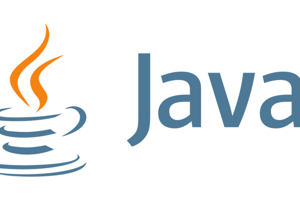Podcast
Questions and Answers
What is the purpose of an accumulator in a for-loop?
What is the purpose of an accumulator in a for-loop?
An accumulator stores information computed in the for-loop and retains it after the loop completes.
How does an assert statement function in Python?
How does an assert statement function in Python?
An assert statement checks if a boolean expression is true; if false, it raises an error and can include an error message.
Differentiate between instance attributes and class attributes.
Differentiate between instance attributes and class attributes.
Instance attributes belong to individual objects, while class attributes are shared across all instances of the class.
What is meant by attribute invariants?
What is meant by attribute invariants?
Describe the Bottom-Up Rule in Python.
Describe the Bottom-Up Rule in Python.
In what way can hiding attributes improve class design?
In what way can hiding attributes improve class design?
What role do attributes play within an object in Python?
What role do attributes play within an object in Python?
Explain how an accumulator is typically implemented in a for-loop with an example.
Explain how an accumulator is typically implemented in a for-loop with an example.
What is a call frame in Python and what information does it contain?
What is a call frame in Python and what information does it contain?
Describe the call stack and its structure during function execution.
Describe the call stack and its structure during function execution.
What happens to a call frame once a function call is completed in Python?
What happens to a call frame once a function call is completed in Python?
How is a new call frame added to the call stack when a function calls another function?
How is a new call frame added to the call stack when a function calls another function?
What is the role of the instruction counter in a call frame?
What is the role of the instruction counter in a call frame?
Explain what occurs if an attribute or method is found in multiple locations in Python's class hierarchy.
Explain what occurs if an attribute or method is found in multiple locations in Python's class hierarchy.
Can you define what a constructor is in the context of class creation in Python?
Can you define what a constructor is in the context of class creation in Python?
What is the significance of the init method in Python classes?
What is the significance of the init method in Python classes?
What is the purpose of a call frame in the context of function execution?
What is the purpose of a call frame in the context of function execution?
How does a call stack evolve during recursive function calls?
How does a call stack evolve during recursive function calls?
What is the significance of the return address stored in a call frame?
What is the significance of the return address stored in a call frame?
What happens to the local variables when a function exits and its call frame is removed?
What happens to the local variables when a function exits and its call frame is removed?
What is the structure of a call stack when multiple functions are called sequentially?
What is the structure of a call stack when multiple functions are called sequentially?
How can visualization of a call frame help in debugging recursive functions?
How can visualization of a call frame help in debugging recursive functions?
Explain the relationship between call frames and memory representation in programming.
Explain the relationship between call frames and memory representation in programming.
In what scenario would a call frame remain for an extended period of time during function execution?
In what scenario would a call frame remain for an extended period of time during function execution?
Flashcards
Accumulator
Accumulator
A variable inside a loop that stores information computed during the loop. It retains its value even after the loop ends.
Assert Statement
Assert Statement
A statement that checks a boolean expression. If it's false, it causes an error and stops the program.
Attribute
Attribute
A variable associated with an object, holding data about the object's state.
Instance Attribute
Instance Attribute
Signup and view all the flashcards
Class Attribute
Class Attribute
Signup and view all the flashcards
Attribute Invariant
Attribute Invariant
Signup and view all the flashcards
Getter/Setter
Getter/Setter
Signup and view all the flashcards
Bottom-Up Rule
Bottom-Up Rule
Signup and view all the flashcards
Call Frame
Call Frame
Signup and view all the flashcards
Call Stack
Call Stack
Signup and view all the flashcards
Recursion
Recursion
Signup and view all the flashcards
Iteration
Iteration
Signup and view all the flashcards
Multidimensional Lists
Multidimensional Lists
Signup and view all the flashcards
Generator
Generator
Signup and view all the flashcards
Testing, Debugging, and Exceptions
Testing, Debugging, and Exceptions
Signup and view all the flashcards
Short Answer and Poutporri
Short Answer and Poutporri
Signup and view all the flashcards
Attribute Lookup
Attribute Lookup
Signup and view all the flashcards
Class
Class
Signup and view all the flashcards
Class Definition
Class Definition
Signup and view all the flashcards
Object (Instance)
Object (Instance)
Signup and view all the flashcards
Constructor (init)
Constructor (init)
Signup and view all the flashcards
Class Invariant
Class Invariant
Signup and view all the flashcards
Study Notes
Final Exam Information
- Exam date: Saturday, December 14th
- Exam time: 2:00 PM - 4:30 PM
- Location: Barton Hall
- Seating arrangement: Tables of three
- Multiple review sessions available (7 total)
- Review sessions held in Phillips 101 or Statler Auditorium
Exam Topics
- Material from previous two prelims
- Exceptions
- Generators (covered in 2021 and 2023 exams; coroutines not covered)
- Potential new exam problems: Exceptions and generators.
Review Sessions
- Tuesday, December 6th (Phillips 101): Session 1: Call Frames and Object Diagramming ; Session 2: Classes and Subclasses ; Session 3: Exceptions and Try-Except.
- Wednesday, December 7th (Phillips 101): Session 4: Lists and Sequences ; Session 5: Recursion.
- Thursday, December 8th (Statler Auditorium): Session 6: Generators ; Session 7: Open Question Session.
Final Exam Structure
- 2.5 hour exam
- 7 questions (1 for name/netID, plus 6 more) – 2 extra questions compared to a prelim
Studying That Suits You
Use AI to generate personalized quizzes and flashcards to suit your learning preferences.




